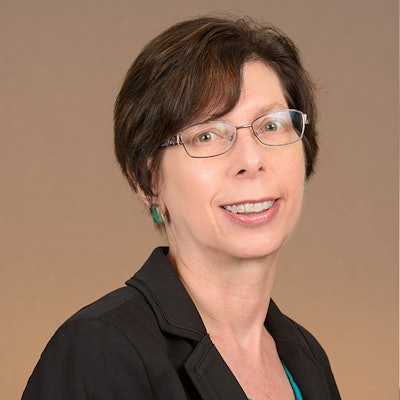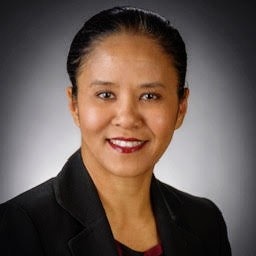Postsecondary education provides graduates with greater access to job opportunities and higher earning potential throughout their lifetimes. But higher education isn’t the only provider of communal uplift.
 Dr. Karen Mossberger, the Frank and June Sackton Professor in the school of public affairs and director of the Center on Technology, Data and Society at Arizona State University.
Dr. Karen Mossberger, the Frank and June Sackton Professor in the school of public affairs and director of the Center on Technology, Data and Society at Arizona State University.
Mossberger presented her research at a webinar hosted by the American Association of Colleges and Universities (AAC&U), a membership organization that advances the democratic purpose of higher education. Choosing the Future: Technology and Opportunity in Communities, a book Mossberger coauthored with Dr. Caroline J. Tolbert and Dr. Scott J. LaCombe, reveals that prosperity and income increases correlate with the number of broadband subscriptions in an area, whether it’s rural, urban, or suburban, across all demographics.
“Broadband is important for participation in society,” said Mossberger. “It’s important for economic development as well as individual opportunities. Widespread digital access and skills may also represent human capital capacity and community, because it provides access to information for education and job searches, skills for jobs and entrepreneurship, richer information networks and communities.”
But broadband access varies across regions, states, and even towns. In suburban Douglas County, Colo., 95% of households have access to broadband. But just south of Colo. in Navajo Nation, only 27% of residents have access. In Memphis, Tenn., broadband household access varies by zip code from 26.4% to 88.9%.
That’s why Mossberger and other experts want to see universities and colleges coordinate with the National Telecommunications and Information Administration (NTIA) to disperse the roughly $48 billion allotted toward programs that create greater digital equity.
 Angela Thi Bennett, digital equity director with the National Telecommunications and Information Administration.
Angela Thi Bennett, digital equity director with the National Telecommunications and Information Administration.
The funding is meant to provide affordable, high-speed broadband connection to unserved and underserved populations, including racial and ethnic minorities, low-income areas, disabled people, incarcerated individuals, veterans, aging populations and more. Higher education institutions, experts said, are perfectly positioned to be leaders at this moment, using their research, strategic experience, and community knowledge to improve broadband access for everyone in the country.
As state and local governments develop plans to utilize these federal funds, they are required to involve community stakeholders, which can include nonprofit organizations, civil rights groups, workforce development programs, state agencies and public housing authorities. Post-secondary institutions could be instrumental in helping to coordinate and implement varied strategies.
“You train the workforce,” said Bennett. “You’re that foundation for every occupation, from technological to community colleges, to Historically Black Colleges and Universities (HBCUs) to other Minority Serving Institutions (MSIs) that are sitting in the heart of our unserved or underserved populations.”
While $48 billion is a sizable sum, it still won’t be enough to help everyone who needs it, according to Jochai Ben-Avie, co-founder and chief executive of Connect Humanity, a fund for digital equity that connects underserved populations with philanthropic programs or other investments to build internet infrastructure. Connect Humanity has partnered with the city of Orangeburg, South Carolina, home to two HBCUs and roughly 14,000 residents, most without access to high-speed internet.
By working with the city’s Department of Public Utilities, Ben-Avie is exploring how campuses could become communications hubs themselves.
“Universities have free or substantially reduced cost access to fiber to extend into community and lease to an operator, which could provide an interesting new income for the university,” said Ben-Avie. “Eighty-two percent of HBCUs are located in broadband deserts. This makes HBCUs interesting and powerful partners in bridging the digital divide.”
Ultimately, experts agreed that higher education institutions provide the anchor needed to access and implement these funds.
“Institutions can make sure that people who are most impacted, who are not usually at the table, have a voice,” said Bennett. “Institutions are the experts in their communities, and they can have meaningful input on the solutions generated.”
Liann Herder can be reached at [email protected].






















